Filter by
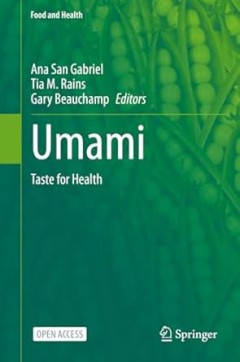
Umami
This Open Access book covers the concept of umami, the unique taste imparted by the amino acid glutamate, was first described in 1908 by Dr. Kikunae Ikeda of Tokyo University. Over the past century, hundreds of studies have explored the mechanistic underpinnings of the taste, leading to the characterization of the umami taste receptor in 2002. How this fifth basic taste figures into nutrition a…
- Edition
- -
- ISBN/ISSN
- 978-3-031-32691-2
- Collation
- XIII, 198
- Series Title
- -
- Call Number
- -
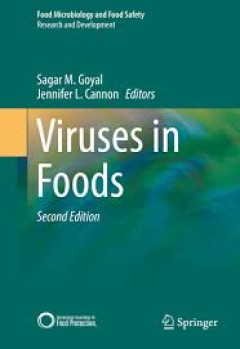
Viruses in Foods
Foodborne viruses are an important group of pathogens recognized to cause significant disease globally, in terms of both number of illnesses and severity of disease. Contamination of foods by enteric viruses, such as human norovirus and hepatitis A and E viruses, is a major concern to public health and food safety. Food Virology is a burgeoning field of emphasis for scientific research. Many de…
- Edition
- -
- ISBN/ISSN
- 978-3-319-30723-7
- Collation
- -
- Series Title
- -
- Call Number
- -
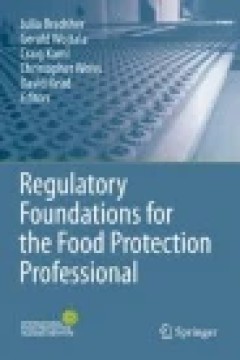
Regulatory Foundations for the Food Protection Professional
Regulatory Foundations for the Food Protection Professional is a comprehensive guide for the entry-level food protection professional (FPP) working in either the public or private sector. The book can also serve as a foundation for students in academic programs preparing for a career in food protection. Additionally, as the Food Safety Modernization Act (FSMA) is implemented, this book will pro…
- Edition
- -
- ISBN/ISSN
- -
- Collation
- -
- Series Title
- -
- Call Number
- -
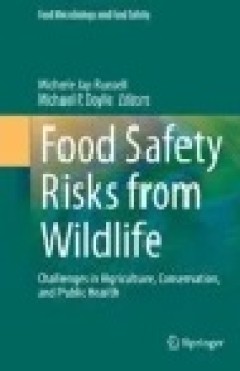
Food Safety Risks From Wildlife: Challenges in Agriculture, Conservation, and…
Foodborne illnesses caused by zoonotic pathogens associated with wildlife hosts are an emerging microbial food safety concern. Transmission of foodborne pathogens can occur through ingestion, or improper handling, of contaminated game meat. Wild and feral animals have also been investigated as potential sources of Campylobacter, Escherichia coli O157:H7 and other enteric pathogens following foo…
- Edition
- -
- ISBN/ISSN
- 978-3-319-24442-6
- Collation
- XII, 254 hlm.
- Series Title
- Food Microbiology and Food Safety
- Call Number
- -
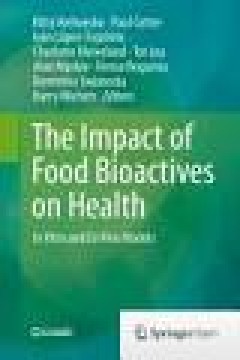
The Impact of Food Bioactives on Health
“Infogest” (Improving Health Properties of Food by Sharing our Knowledge on the Digestive Process) is an EU COST action/network in the domain of Food and Agriculture that will last for 4 years from April 4, 2011. Infogest aims at building an open international network of institutes undertaking multidisciplinary basic research on food digestion gathering scientists from different origins (fo…
- Edition
- 1
- ISBN/ISSN
- 978-3-319-16104-4
- Collation
- XVII, 338, 22 b/w illustrations, 35 illustrations in colour
- Series Title
- The Impact of Food Bioactives on Health
- Call Number
- -
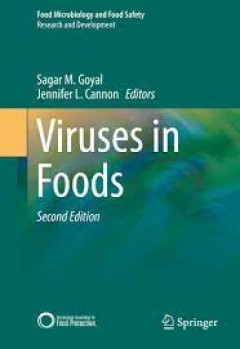
Viruses in Foods
Foodborne viruses are an important group of pathogens recognized to cause significant disease globally, in terms of both number of illnesses and severity of disease. Contamination of foods by enteric viruses, such as human norovirus and hepatitis A and E viruses, is a major concern to public health and food safety. Food Virology is a burgeoning field of emphasis for scientific research. Many de…
- Edition
- -
- ISBN/ISSN
- 978-3-319-30723-7
- Collation
- XIII, 512
- Series Title
- -
- Call Number
- -
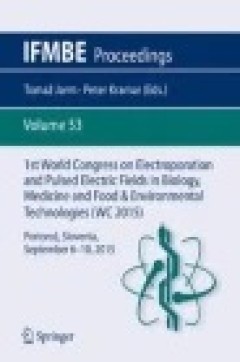
1st World Congress on Electroporation and Pulsed Electric Fields in Biology, …
This volume presents the proceedings of the 1st World Congress on Electroporation and Pulsed Electric Fields in Biology, Medicine and Food & Environmental Technologies (WC2015). The congress took place in Portorož, Slovenia, during the week of September 6th to 10th, 2015. The scientific part of the Congress covered different aspects of electroporation and related technologies and included the …
- Edition
- -
- ISBN/ISSN
- 978-981-287-817-5
- Collation
- -
- Series Title
- IFMBE Proceedings
- Call Number
- 610.28 WOR w
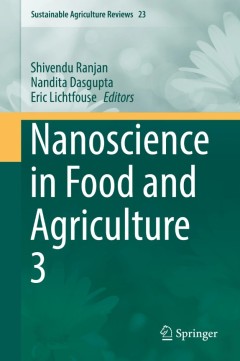
Nanoscience in Food and Agriculture 3
This book is the third volume on Nanoscience in Food and Agriculture, published in the Sustainable Agriculture Reviews series. In this book we present ten chapters describing the synthesis and application of nanomaterials for health, food, agriculture and bioremediation. Nanomaterials with unique properties are now being used to improve food and agricultural production. Research on nanomateria…
- Edition
- 1
- ISBN/ISSN
- 978-3-319-48008-4
- Collation
- XIII, 289
- Series Title
- Sustainable Agriculture Reviews
- Call Number
- -

Nanoscience in Food and Agriculture 2
This book is the second volume on this topic within the series. With unique properties, nanomaterials are rapidly finding novel applications in many fields such as food, medicine, agriculture and pollution. Such applications include to treat cancer, nanosensors to detect food contamination, nanomaterials for food packaging, nanoencapsulation to preserve nutraceuticals, and nanofertilisers for…
- Edition
- 1
- ISBN/ISSN
- 978-3-319-39305-6
- Collation
- XVII, 373
- Series Title
- Sustainable Agriculture Reviews
- Call Number
- -

Nanoscience in Food and Agriculture 1
Nanotechnology is a fast-evolving discipline that already produces outstanding basic knowledge and industrial applications for the benefit of society. Whereas the first applications of nanotechnology have been developed mainly in material sciences, applications in the agriculture and food sectors are still emerging. Due to a rapid population growth there is a need to produce food and beverages …
- Edition
- 1
- ISBN/ISSN
- 978-3-319-39302-5
- Collation
- XIX, 324
- Series Title
- Sustainable Agriculture Reviews
- Call Number
- -
 Computer Science, Information & General Works
Computer Science, Information & General Works  Philosophy & Psychology
Philosophy & Psychology  Religion
Religion  Social Sciences
Social Sciences  Language
Language  Pure Science
Pure Science  Applied Sciences
Applied Sciences  Art & Recreation
Art & Recreation  Literature
Literature  History & Geography
History & Geography